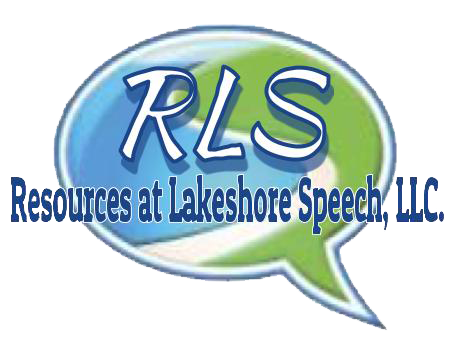Holidays can be a time when the normal routine is disrupted. It’s time to get back on track and follow your daily routine.
Continue readingTalking and Growing: New Year’s Resolutions for Speech Therapy!
How to Prepare for Gift Giving and Receiving
Getting and giving gifts can be exciting but hard for some individuals. Preparing for this time of the year helps to make everyone’s celebration special.
Continue readingLearning to be Social
The calendar doesn’t lie. How is it we are only 10 days away from Valentine’s Day!? With all the attention on sharing love and kindness on that day (as well as every day), we need to take a moment to pause and take into account the skills that bring people closer are really hard to learn.
Some loved ones pick up on social cues and nuances without issue and others require a very clear explanation. As parents, taking the time to frame acceptable and unacceptable behaviors for your family’s values is crucial. Society dictates a number of ‘unwritten’ rules, which makes learning these skills even more difficult for some. Providing a safe environment to discuss and process these ‘unwritten’ rules is important at every age of development. The American Speech-Language Hearing Association (ASHA) provide a nice resource for families focused on this area of speech and language.
Your friendly speech-language pathologist would be happy to help you and your family with any questions or concerns you may have related to social communication, social skills, or social pragmatics. Please feel free to give Kelly a call at 440-471-7190 to set up an appointment.
Yours in Speech,
Lakeshore Speech Therapy, LLC.
Revving up the holiday season!
The holiday season is revving up to get ready to roll. While we acknowledge there are significant stressors for you and your loved ones at this time of year, we could also consider the stress and comfort of extended families and friends. It is not your job to do everyone else’s job, however, taking a few moments to realize the impact you and your loved ones have on others could make family and friend gatherings more enjoyable for everyone.
Providing information about characteristics that are unique to your loved one, may create a more tolerant and understanding environment. A simple phone call, text or email to the host or hostess the explain those ‘quirks’ that you and your immediate family may not even notice. For example, let the homeowner know if your loved one needs to see all the bathrooms upon entering a new location or if your loved one may go around the home and close all the doors.
Help your extended family and friends better understand your loved one’s form of communication. Share his/her successes and any ‘triggers’ that may exist (ie: asking more than 3 times to clarify a phrase or word). Provide a few simple tips for the best way to engage your loved one (ie: asking yes/no questions or asking questions about the here/now vs past/ future).
Anticipate situations that may prove to be very stressful not only for you and your loved one, but the host/hostess. Communicate that you may be bringing a different meal for your loved one to enjoy vs eating the traditional meal. Share that your loved one may take a ‘break’ during the meal and what that can be expected (ie: your loved one may need to take a break in a room where you can guide your loved one to quiet area).
Open and host communication and preparation can create a setting where everyone enjoys their time together creating memories!
Yours in Speech,
Lakeshore Therapy Speech, LLC.
Making a Self-Care Plan
All of the clocks have finally all been changed (except for one, there is always ONE clock in the house that just never quite makes the cut and is never changed), the Halloween decorations have been put away and what is that sound? Silence. The calm before the Holiday Season frenzy.
Take a few seconds of this ‘down time’ to focus on realizing the importance of self-care. Parents and caregivers of individuals with special needs typically do not stop to worry about themselves. Not only is this pattern unfair to your loved ones, but more importantly, it is not fair to Y.O.U.
Consider the five minutes it takes you to read this blog post as the start of your self-care routine. Consider taking this time to make a plan for yourself. Give yourself the opportunity to refill your tank so you can cruise into the Holiday Season ready and rejuvenated.
Yours in Speech,
Lakeshore Speech Therapy, LLC
A Candy Plan!
You’ve planned the costume, you’ve walked the route, you’ve practiced knocking on doors… a few more thoughts to help make your family’s trick or treat evening sweet.
What will you do with all that candy? Once your loved one sees her/his bounty of sweetness, she/he may not want to part with a single piece. Create a plan and share that plan well before that candy is in your house.
Will your family spend the last minutes of Halloween counting and sorting candy? Will there be a huge candy trading event in the middle of your living room? Providing a plan for the evening can make a difference in ending the evening on a sweet note.
Create a ‘buy back’ program if you would prefer your loved ones not have free access to that much candy. Make your program work in a way in which your loved one will receive a certain number of dollars, stars, tokens, etc. when they ‘trade in’ a certain number of pieces of candy. Check with your dentist to see if they are offering a buy back program.
Create a ‘decorate a gingerbread house’ program. Decorate a box with pictures of gingerbread houses. Put candy that could be used to decorate a gingerbread house in the box. You now have everything you need to decorate your holiday gingerbread house.
Create a ‘week long candy plan’. Divide a shoe box into 7 sections. Place one or two pieces of candy in each section. Give your loved one the opportunity to choose the candy in one section every day.
Whatever your plan, share it with your loved ones well before the candy starts pouring in the house. Make it very clear where the candy will be stored and what the plan will be once it is collected. It may feel like you’re taking the fun out of the candy collection, rather you are providing the framework for a fun and enjoyable evening from start to finish!
Yours in Speech,
Lakeshore Speech Therapy, LLC.
Costume Creations!
Dressing-up, costumes, masks and make-up….some would say these are the best parts of Halloween and others would beg differ significantly. While the stores are filled with the newest versions of costumes, consider making one that best ‘fits’ your loved one. One that ‘fits’ her/his physical body, sensory needs, and emotional needs.
Consider costumes that follow the ‘less is more’ theory. Less different pieces of a costume, more focus on making the pieces ‘scream’ exactly the theme or character of the costume.
- Jeans, t-shirt, bandanna around the neck – you have a cowgirl/boy
- Jeans/leggings, t-shirt, bandanna around the head – depending on your fold the bandanna, you now have a rocker or a pirate
- Larger sized white t-shirt (your going to want a pair of pants of sorts under it :))
- draw a face on it – you have a ghost
- Add black dots on it – you have a die
- Add black lines on it – you have a zebra
Consider costumes that do not have tags or items that will distract your loved one to the point where she/he is unable to focus on walking, the party, etc. While adorable and fun, things like fringe, beads, sparkles, and sequins can create an entirely different issue. In this category lives masks and make-up. While both of these items bring a lot to a costume, please consider staying away from these if you know your loved one will be distracted or upset by these additions.
Consider costumes that can go over the layers of possible winter gear that may or may not be part of your evening. Given the weather, being prepared to add or take away a layer on a moments notice will make the difference on the stress level of the evening.
Consider incorporating the phrase “Trick or Treat” on the costume itself if your loved one is non-verbal or might ‘freeze’ . Somehow, someway, make the words part of the costume – add a simple button to the costume with the words ‘Trick or Treat’.
Consider practicing wearing the costume around the house – remember practice makes permanent. This gives your loved one not only the time to become familiar and comfortable with the costume, but will give you time to troubleshoot potential issues (ie: costume too long and possibly a tripping hazard, costume too tight/loose, etc.).
Prior planning with the costume will prevent unneeded stress and potential unexpected behaviors so you can all enjoy a fun evening being together.
Yours in Speech,
Lakeshore Speech Therapy, LLC.
Practice Makes Permanent
We’ve shared the idea of “practice makes permanent’ in previous posts. This technique is ever important when preparing for an evening of ghosts and goblins and candy acquisition – aka, Halloween. You may think it’s too early and there are so many days to prepare before the end of the month, however we all know how quickly the days fly.
Practicing for an evening of trick-or-treating does not have to look like ‘practice’ or be announced as such. Take a walk on the trick-or-treat route you intend to follow during the day. Make sure to point out various landmarks as well as the changes (different decorations, leaves falling off the trees, etc.). Expand that practice walking the route as it begins to get dark, note the street lights turning on as well as pointing out how the houses may look different, but are the same during the day or night. If your loved one enjoys a good map, make a map of your route and fill in the landmarks together.
As the day draws closer, practice trick or treating from room to room in your house. Close the bathroom door and have your loved on practice trick-or-treating for toothpaste or a toothbrush. While it sounds silly, it’s a safe non-pressured way to practice this exchange as well as gives you a marker for future experiences (“Remember how we did this at home for toothpaste?”). Trick-or-Treating for everyday items (ie: while getting dressed or cleaning a room) may also be the ticket for ‘fun’ buy in for a less enjoyable activity.
Share with neighbors and family the ‘practice makes permanent’ theory and request a practice time that is more similar to the actual event. While your loved one may need a few rounds of practice, it will soon make sense how the exchange of events will occur and the pay-off is well worth the time invested in practicing. Note: the pay-off does not necessarily need to be candy. While candy may be a delight and preferred, practicing these skills can result in the acquisition of other items not necessarily of the sugar food group sort.
A final round of practice making permanent may be partaking in some of indoor or less conventional trick or treat options in the area. Here are a few links that may help in planning these practice sessions:
- Family-Friendly Halloween & Fall Events in Northeast Ohio
- The Best Kid-Friendly (Non-Scary) Halloween Events in Northeast Ohio
We’ve said it once and we’ll say it again, practice makes permanent which can significantly decrease unexpected behaviors which creates a less stressful situation for EVERYONE to enjoy!
Yours in Speech,
Lakeshore Speech Therapy, LLC
Friday Night Lights, Coming Soon!
It’s almost impossible to believe that August has come and will be leaving in a few days! Time flies when you’re running at land speed records in a million different directions. First day of school pictures have been taken and posted, ‘normal’ routine has started, and “Friday Night Lights” will soon be starting! Those “Friday Night Lights” can help build language as well as social skills more than you have thought.
“Friday Night Lights” harkens memories of high school football, marching band, and hanging out on the bleachers with your friends. Add adulthood and a family and “Friday Night Lights” might not conjure up the same warm feelings as it once had. Running to the restrooms, purchasing way too much from the concession stand and listening to complaints of being bored or the seats are too hard…..ah yes, “Friday Night Lights”. Preparing your family for these evenings can only make those “Lights” shine brighter.
Just like the football team, cheerleaders and marching band, your family ‘team’ needs to practice for the big night as well. How do spectators practice? Read on.
Go to practice games and rehearsals. Chances are the local middle and high school teams and marching bands are practicing daily. Take advantage of these less formal settings to PRACTICE sitting on the bleachers. Take note of any issues related to the bleachers (seats are too hard, sitting up high is scary, being able to see through to the ground is scary) to find the areas that are most comfortable for you and your family. Visit the restrooms. Locate the changing area if needed. Bring your family members in to the restrooms to become familiar with these surrounds so there won’t be any issues when there are larger crowds. Experience the sounds of the practices to decrease being alarmed during a game. The whistles on the field, the marching band playing the fight song, the cheerleaders cheers, all of these sounds are new and can be very upsetting. Help your family anticipate these sounds.
Learn the lingo. If a family member is non-verbal, create signs that have simple messages – Go Team – to get them to be part of the fun. Practice simple messages for family members with limited language – Go! – Fight! – Win! A football game is language rich. Choose one or two words that will have the most meaning and practice at home and at practice games.
Recognizance. Get the low down on your local “Friday Night Lights” game by making it a date night or going alone. Take note of how crowded certain sections of the bleachers become. When the marching band plays (typically there’s a pre-game and of course the half-time show). Where the cheerleaders stand. If there is a mascot. And maybe the most important piece, what is offered at the concession stand. These pieces of information will help you to better plan and anticipate your family’s needs during the game.
Concession stand mania. So much of the game is about the food and rightfully so. Make a plan for how your family will make purchases. Make that plan very clear to everyone to avoid melt-downs at the stadium. Create a snack board of the items at the concession stand (You have this information because you went to the game alone before.). Not only does a snack board provide a visual cue for everyone, put gives non-verbal members of the family a way to communicate their choice without play the ‘yes/no’ or ‘point and cry’ game.
Set a time limit, initially. At the onset of the season, you may need to make it very clear when or how long your family ‘team’ will be attending the event. You want to leave the game on a high note. Setting this parameter may avoid a melt-down when it is time to leave. Give a concrete time that may or may not necessarily be associated with the clock. Because of your recognizance trip, you have the information you need. Give warnings prior to departure time (“After this song, we are leaving.” “When the cheerleaders finish we are walking to the car.”). Expand the amount of time you spend at each game you attend, if only by 10 minutes.
Don’t forget, this is fun! Time together is the biggest victory of all! Enjoy!
Yours in Speech,
Lakeshore Speech Therapy, LLC














